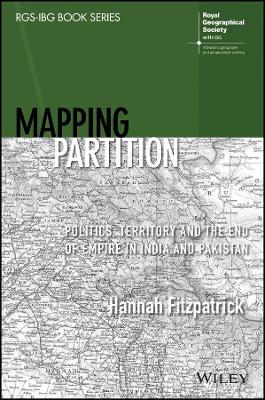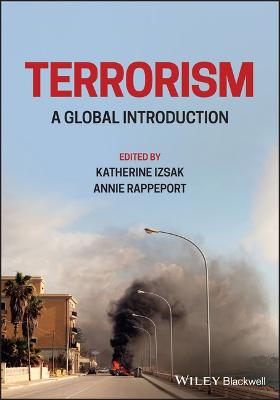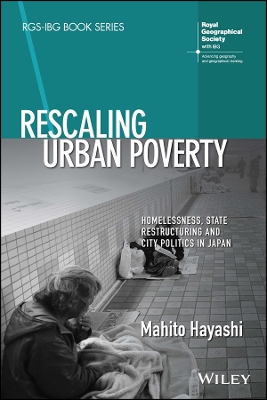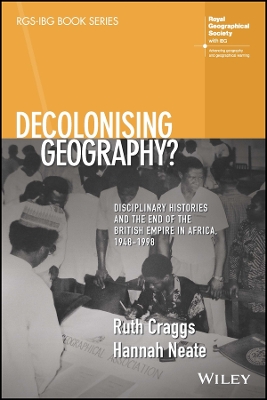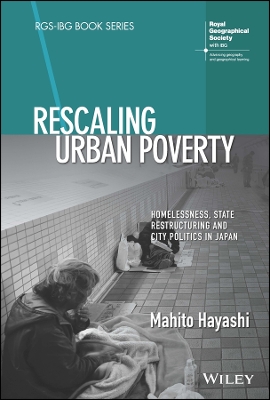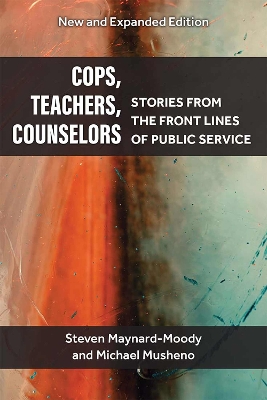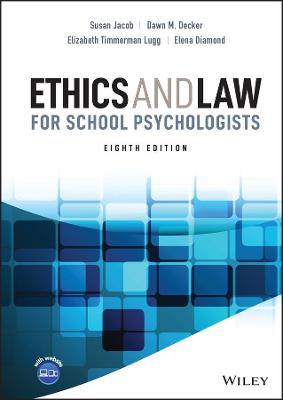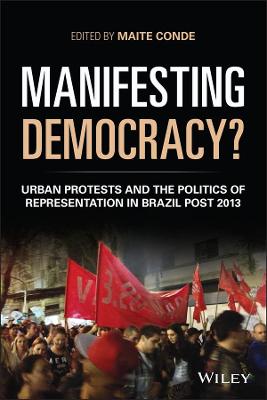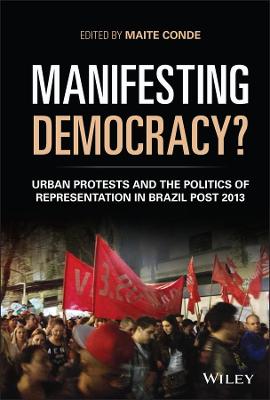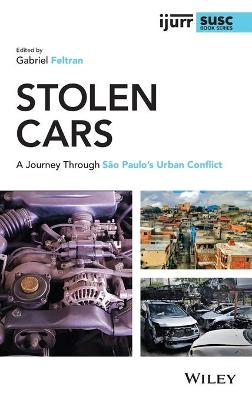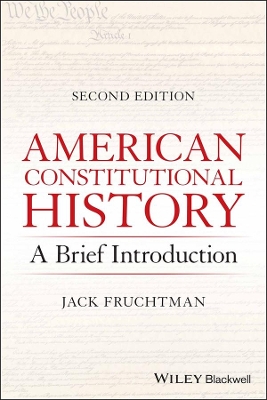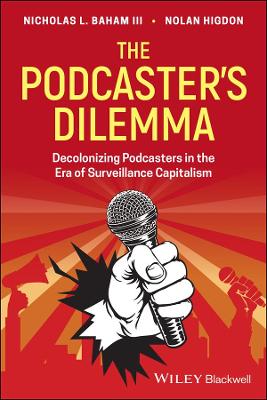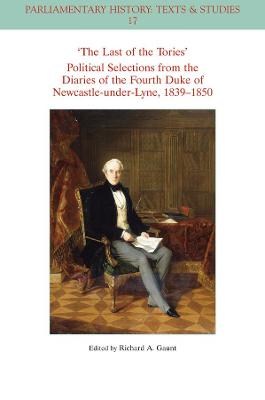American Politics and Society
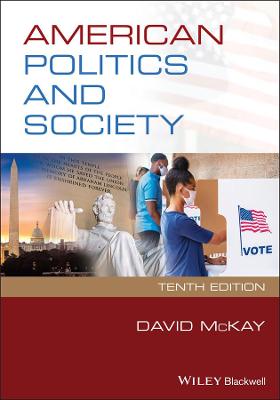 -15%
portes grátis
-15%
portes grátis
American Politics and Society
McKay, David
John Wiley and Sons Ltd
11/2021
512
Mole
Inglês
9781119578369
15 a 20 dias
1034
List of Figures xiv
List of Tables xvii
Preface to the Tenth Edition xviii
1 Governing in a Polarized Society 1
Chapters to Come 5
Glossary 5
2 Beliefs, Values and American Society 6
The Nature of American Beliefs and Values 7
Values and American Society 17
Controversy 2.1. Immigration: The Changing Nature of the Debate 23
Controversy 2.2. How Classless is American Society? 26
Controversy 2.3. Americans' Ambivalent View of Government and Taxes 27
Social Structure 27
Summary 38
Questions for Discussion 38
Glossary 38
Notes 39
Further Reading 40
3 Constitutional Government 41
Origins 42
The American Constitution 46
Biographies. Hamilton and Madison 52
Ratification 52
The Adaptive Constitution 54
Controversy 3.1. How Democratic is the Constitution? 58
Assessing the Constitution 59
Summary 60
Questions for Discussion 61
Glossary 61
Notes 62
Further Reading 62
4 Federalism: Cooperation and Conflict 63
Federalism in Theory and Practice 64
The Evolution of American Federalism 68
The Changing Federal Role 70
Controversy 4.1. Federal versus State Power 72
Briefing 4.1. US Federalism in Comparative Perspective 75
A Changing Court Role? 80
The Future of American Federalism 82
Summary 84
Questions for Discussion 84
Glossary 84
Notes 86
Further Reading 86
5 American Political Parties: Polarization and Conflict 87
The Functions of Parties 88
Briefing 5.1. Why Only Two Parties in the US? 93
Crisis and Change in the American Party System 94
The Decline and Rise of Political Parties 100
Biographies: Lee Atwater and Karl Rove - Republican Party 'Heavies' 102
Changing Party Ideology: 1970-2021 102
Explaining Party Change 105
Briefing 5.2. Populism and American Political Parties 106
Stronger but More Polarized Parties 107
Briefing 5.3. The Tea Party Movement and its Legacy 108
Summary 109
Questions for Discussion 109
Glossary 109
Notes 110
Further Reading 111
6 Elections and Political Participation 112
Patterns of American Electoral Behaviour 114
The 'American Voter' Model and the New Deal Coalition 122
The Decline of the New Deal Coalition and the Rise of a Divided Electorate 124
Controversy 6.1. Non-voting: Does it Matter? 127
Controversy 6.2. Are American Elections Corrupt? 128
Controversy 6.3. Does the Decline in Social Capital Matter? 133
Non-Electoral Political Participation 134
Summary 139
Questions for Discussion 139
Glossary 139
Notes 140
Further Reading 141
7 The Media and American Politics 142
Media Structure and Organization 143
Organization and Ownership 144
How Biased? The Media and the Political Agenda 146
Biography. The Rise and Fall of Roger Ailes Creator of the Fox News Network 150
Controversy 7.1. Legitimizing the Conservative Right? The Role of Real Clear Politics 152
Controversy 7.2. How Biased Are Television, Radio and the Electronic Media? 152
Controlling the Media 153
The Media and American Democracy 154
Summary 155
Questions for Discussion 156
Glossary 156
Notes 156
Further Reading 157
8 Congress I: The People's Branch? 158
Representation and Congress 160
Briefing 8.1. Forms of Representation 162
Congressional Elections 163
Legislators as Rational Actors 170
Biography. Jim Jordan: Freedom Caucus Firebrand 172
The Work of Members of Congress 175
Conclusions 177
Summary 178
Questions for Discussion 178
Glossary 179
Notes 179
Further Reading 180
9 Congress II: Functions and Powers - The Broken Branch? 181
The Functions of Congress 182
The Structure of Power in Congress 183
Congress Under Fire 191
Biography. Jack Abramoff: Master Lobbyist and Convicted Felon 201
Controversy 9.1. Divided Government: For and Against 201
Biography. Alexandra Ocasio-Cortez (AOC) and the 'Squad' 202
Reform and Change in Congress 202
Is Congress the 'Broken Branch'? 207
Summary 208
Questions for Discussion 208
Glossary 209
Notes 210
Further Reading 210
10 The Presidency I: Powers and Selection 211
Formal Sources of Power 212
Briefing 10.1. The American Presidency: A Unitary Institution 214
Informal Powers 215
Presidential Selection 217
Controversy 10.1. Primaries: For and Against 220
Briefing 10.2. The Role of Money 222
Presidential Selection: Faults and Foibles 228
Summary 230
Questions for Discussion 230
Glossary 230
Notes 231
Further Reading 231
11 The Presidency II: The President as Chief Executive 232
The Presidency in a Changing America 233
Presidential Abuse of Power and the Congressional Response 238
Presidential Resources 241
Biography. Steve Bannon: Political Strategist and Crisis Junkie 244
Briefing 11.1. Organizing the White House 245
Assessing the Presidency: Presidential Power at Home and Abroad 253
Summary 255
Questions for Discussion 255
Glossary 255
Notes 256
Further Reading 256
12 Bureaucratic Power: Federal Departments and Agencies 258
The Federal Bureaucracy: Organization and Function 260
Controversy 12.1. Privatization: For and Against 265
The Bureaucracy: How Uncontrollable? 266
The Inherent Power of Bureaucracy 266
The Bureaucratic Hydra: A Uniquely American Phenomenon? 268
Reform Attempts 271
Concluding Remarks 275
Summary 276
Questions for Discussion 276
Glossary 277
Notes 278
Further Reading 278
13 The Security State 279
The Rise of the Security State 280
9/11, the Patriot Act and the Department of Homeland Security 282
Briefing 13.1. The Department of Homeland Security and the Culture of Threat 284
Threats to Civil Liberties 285
Trump and the Security State 287
The Security State and American Values 289
Summary 291
Questions for Discussion 291
Glossary 291
Notes 292
Further Reading 292
14 Organized Interests: The Real Power? 293
Interests, Groups and Lobbyists 295
Economic Groups 297
Briefing 14.1. The Enron Collapse and Crony Capitalism 298
Controversy 14.1. Do the Bankruptcy Laws Damage Workers' Rights? 299
Professional Groups 303
Promotional Groups 305
Political Action Committees 307
The Washington Lobby 309
Interest Groups: For and Against 309
Summary 313
Questions for Discussion 313
Glossary 313
Notes 314
Further Reading 315
15 The Supreme Court and Judicial Politics 316
The American Legal System 318
The Supreme Court: Decision Making 321
The Supreme Court and Political Power 326
Controversy 15.1. The Supreme Court: An Active or a Passive Role? 333
Briefing 15.1. The Supreme Court and the Guantanamo Bay Detainees 338
The Polarized Rehnquist and Roberts Courts 339
Conclusions: The Court and American Democracy 343
Summary 344
Questions for Discussion 344
Glossary 345
Notes 346
Further Reading 346
16 Regulating Morality: Civil Rights, Liberties and the Conscience Issues 347
Introduction 348
Regulating Public Morality 348
Civil Liberties 349
Controversy 16.1. What's So Wrong with Gun Control? 356
Briefing 16.1. Abortion and American Politics 357
Equality and Civil Rights 358
Briefing 16.2. Federalism and Same-Sex Marriage 364
Conclusions 364
Summary 365
Questions for Discussion 365
Glossary 366
Note 367
Further Reading 367
17 Social Policy in America: Self-Reliance and State Dependence 368
The Federal Government and Social Welfare in America: The Reluctant Provider 369
Federalism 371
Social Security, Medicare and the Electoral Connection 372
The Continuing Importance of Self-reliance 374
Briefing 17.1. Why was Health Care So Hard to Reform? 374
Health-care Reforms 375
The Federal Government and Education 377
Conclusions 378
Summary 379
Questions for Discussion 379
Glossary 380
Further Reading 380
18 Managing Economic Change 381
State and Economy in the United States 382
Ideology and Economic Policy 384
Controversy 18.1. Foreign Economic Policy and Trumps America First Policy 387
Institutions and Economic Policy 388
Briefing 18.1. Institutional Sclerosis and the Budget, 2011-2013 391
Briefing 18.2. The Great Housing Crash, 2007-2012 397
Conclusions: Economic Policy in an Age of Uncertainty 398
Summary 399
Questions for Discussion 399
Glossary 399
Further Reading 400
19 Environmental Politics 401
Background 402
The Emerging Environmental Agenda 402
Controversy 19.1. International Cooperation on Climate Change:
The Kyoto Protocol and the Paris Treaty on Climate Change 405
Policy Actors and Institution 406
Chronology 411
Political Parties and the Environment 413
Conclusions: The Future of Environmental Politics 413
Summary 414
Questions for Discussion 414
Glossary 414
Notes 415
Further Reading 415
20 The American World Role 416
The Institutional Context 418
American Foreign Policy in the Post-9/11 World 421
Briefing 20.1. The Rise and Fall of Neoconservatism 426
Conclusions: Bound to Lead or Bound to Fail? 426
Summary 428
Questions for Discussion 428
Glossary 429
Notes 429
Further Reading 430
21 The American Political System in a Divided Society 431
Assessing the American Polity 432
Reform and Renewal 436
Questions for Discussion 438
Glossary 438
Notes 438
Further Reading 438
Websites 439
Glossary 443
Appendix: The Constitution of the United States 455
Index 474
List of Figures xiv
List of Tables xvii
Preface to the Tenth Edition xviii
1 Governing in a Polarized Society 1
Chapters to Come 5
Glossary 5
2 Beliefs, Values and American Society 6
The Nature of American Beliefs and Values 7
Values and American Society 17
Controversy 2.1. Immigration: The Changing Nature of the Debate 23
Controversy 2.2. How Classless is American Society? 26
Controversy 2.3. Americans' Ambivalent View of Government and Taxes 27
Social Structure 27
Summary 38
Questions for Discussion 38
Glossary 38
Notes 39
Further Reading 40
3 Constitutional Government 41
Origins 42
The American Constitution 46
Biographies. Hamilton and Madison 52
Ratification 52
The Adaptive Constitution 54
Controversy 3.1. How Democratic is the Constitution? 58
Assessing the Constitution 59
Summary 60
Questions for Discussion 61
Glossary 61
Notes 62
Further Reading 62
4 Federalism: Cooperation and Conflict 63
Federalism in Theory and Practice 64
The Evolution of American Federalism 68
The Changing Federal Role 70
Controversy 4.1. Federal versus State Power 72
Briefing 4.1. US Federalism in Comparative Perspective 75
A Changing Court Role? 80
The Future of American Federalism 82
Summary 84
Questions for Discussion 84
Glossary 84
Notes 86
Further Reading 86
5 American Political Parties: Polarization and Conflict 87
The Functions of Parties 88
Briefing 5.1. Why Only Two Parties in the US? 93
Crisis and Change in the American Party System 94
The Decline and Rise of Political Parties 100
Biographies: Lee Atwater and Karl Rove - Republican Party 'Heavies' 102
Changing Party Ideology: 1970-2021 102
Explaining Party Change 105
Briefing 5.2. Populism and American Political Parties 106
Stronger but More Polarized Parties 107
Briefing 5.3. The Tea Party Movement and its Legacy 108
Summary 109
Questions for Discussion 109
Glossary 109
Notes 110
Further Reading 111
6 Elections and Political Participation 112
Patterns of American Electoral Behaviour 114
The 'American Voter' Model and the New Deal Coalition 122
The Decline of the New Deal Coalition and the Rise of a Divided Electorate 124
Controversy 6.1. Non-voting: Does it Matter? 127
Controversy 6.2. Are American Elections Corrupt? 128
Controversy 6.3. Does the Decline in Social Capital Matter? 133
Non-Electoral Political Participation 134
Summary 139
Questions for Discussion 139
Glossary 139
Notes 140
Further Reading 141
7 The Media and American Politics 142
Media Structure and Organization 143
Organization and Ownership 144
How Biased? The Media and the Political Agenda 146
Biography. The Rise and Fall of Roger Ailes Creator of the Fox News Network 150
Controversy 7.1. Legitimizing the Conservative Right? The Role of Real Clear Politics 152
Controversy 7.2. How Biased Are Television, Radio and the Electronic Media? 152
Controlling the Media 153
The Media and American Democracy 154
Summary 155
Questions for Discussion 156
Glossary 156
Notes 156
Further Reading 157
8 Congress I: The People's Branch? 158
Representation and Congress 160
Briefing 8.1. Forms of Representation 162
Congressional Elections 163
Legislators as Rational Actors 170
Biography. Jim Jordan: Freedom Caucus Firebrand 172
The Work of Members of Congress 175
Conclusions 177
Summary 178
Questions for Discussion 178
Glossary 179
Notes 179
Further Reading 180
9 Congress II: Functions and Powers - The Broken Branch? 181
The Functions of Congress 182
The Structure of Power in Congress 183
Congress Under Fire 191
Biography. Jack Abramoff: Master Lobbyist and Convicted Felon 201
Controversy 9.1. Divided Government: For and Against 201
Biography. Alexandra Ocasio-Cortez (AOC) and the 'Squad' 202
Reform and Change in Congress 202
Is Congress the 'Broken Branch'? 207
Summary 208
Questions for Discussion 208
Glossary 209
Notes 210
Further Reading 210
10 The Presidency I: Powers and Selection 211
Formal Sources of Power 212
Briefing 10.1. The American Presidency: A Unitary Institution 214
Informal Powers 215
Presidential Selection 217
Controversy 10.1. Primaries: For and Against 220
Briefing 10.2. The Role of Money 222
Presidential Selection: Faults and Foibles 228
Summary 230
Questions for Discussion 230
Glossary 230
Notes 231
Further Reading 231
11 The Presidency II: The President as Chief Executive 232
The Presidency in a Changing America 233
Presidential Abuse of Power and the Congressional Response 238
Presidential Resources 241
Biography. Steve Bannon: Political Strategist and Crisis Junkie 244
Briefing 11.1. Organizing the White House 245
Assessing the Presidency: Presidential Power at Home and Abroad 253
Summary 255
Questions for Discussion 255
Glossary 255
Notes 256
Further Reading 256
12 Bureaucratic Power: Federal Departments and Agencies 258
The Federal Bureaucracy: Organization and Function 260
Controversy 12.1. Privatization: For and Against 265
The Bureaucracy: How Uncontrollable? 266
The Inherent Power of Bureaucracy 266
The Bureaucratic Hydra: A Uniquely American Phenomenon? 268
Reform Attempts 271
Concluding Remarks 275
Summary 276
Questions for Discussion 276
Glossary 277
Notes 278
Further Reading 278
13 The Security State 279
The Rise of the Security State 280
9/11, the Patriot Act and the Department of Homeland Security 282
Briefing 13.1. The Department of Homeland Security and the Culture of Threat 284
Threats to Civil Liberties 285
Trump and the Security State 287
The Security State and American Values 289
Summary 291
Questions for Discussion 291
Glossary 291
Notes 292
Further Reading 292
14 Organized Interests: The Real Power? 293
Interests, Groups and Lobbyists 295
Economic Groups 297
Briefing 14.1. The Enron Collapse and Crony Capitalism 298
Controversy 14.1. Do the Bankruptcy Laws Damage Workers' Rights? 299
Professional Groups 303
Promotional Groups 305
Political Action Committees 307
The Washington Lobby 309
Interest Groups: For and Against 309
Summary 313
Questions for Discussion 313
Glossary 313
Notes 314
Further Reading 315
15 The Supreme Court and Judicial Politics 316
The American Legal System 318
The Supreme Court: Decision Making 321
The Supreme Court and Political Power 326
Controversy 15.1. The Supreme Court: An Active or a Passive Role? 333
Briefing 15.1. The Supreme Court and the Guantanamo Bay Detainees 338
The Polarized Rehnquist and Roberts Courts 339
Conclusions: The Court and American Democracy 343
Summary 344
Questions for Discussion 344
Glossary 345
Notes 346
Further Reading 346
16 Regulating Morality: Civil Rights, Liberties and the Conscience Issues 347
Introduction 348
Regulating Public Morality 348
Civil Liberties 349
Controversy 16.1. What's So Wrong with Gun Control? 356
Briefing 16.1. Abortion and American Politics 357
Equality and Civil Rights 358
Briefing 16.2. Federalism and Same-Sex Marriage 364
Conclusions 364
Summary 365
Questions for Discussion 365
Glossary 366
Note 367
Further Reading 367
17 Social Policy in America: Self-Reliance and State Dependence 368
The Federal Government and Social Welfare in America: The Reluctant Provider 369
Federalism 371
Social Security, Medicare and the Electoral Connection 372
The Continuing Importance of Self-reliance 374
Briefing 17.1. Why was Health Care So Hard to Reform? 374
Health-care Reforms 375
The Federal Government and Education 377
Conclusions 378
Summary 379
Questions for Discussion 379
Glossary 380
Further Reading 380
18 Managing Economic Change 381
State and Economy in the United States 382
Ideology and Economic Policy 384
Controversy 18.1. Foreign Economic Policy and Trumps America First Policy 387
Institutions and Economic Policy 388
Briefing 18.1. Institutional Sclerosis and the Budget, 2011-2013 391
Briefing 18.2. The Great Housing Crash, 2007-2012 397
Conclusions: Economic Policy in an Age of Uncertainty 398
Summary 399
Questions for Discussion 399
Glossary 399
Further Reading 400
19 Environmental Politics 401
Background 402
The Emerging Environmental Agenda 402
Controversy 19.1. International Cooperation on Climate Change:
The Kyoto Protocol and the Paris Treaty on Climate Change 405
Policy Actors and Institution 406
Chronology 411
Political Parties and the Environment 413
Conclusions: The Future of Environmental Politics 413
Summary 414
Questions for Discussion 414
Glossary 414
Notes 415
Further Reading 415
20 The American World Role 416
The Institutional Context 418
American Foreign Policy in the Post-9/11 World 421
Briefing 20.1. The Rise and Fall of Neoconservatism 426
Conclusions: Bound to Lead or Bound to Fail? 426
Summary 428
Questions for Discussion 428
Glossary 429
Notes 429
Further Reading 430
21 The American Political System in a Divided Society 431
Assessing the American Polity 432
Reform and Renewal 436
Questions for Discussion 438
Glossary 438
Notes 438
Further Reading 438
Websites 439
Glossary 443
Appendix: The Constitution of the United States 455
Index 474

